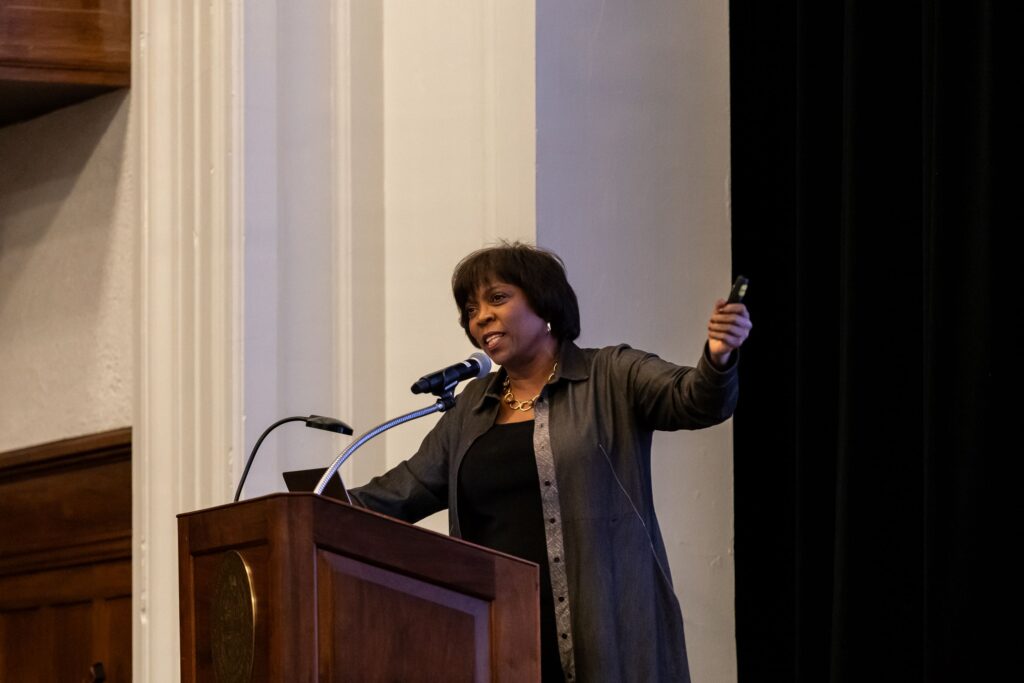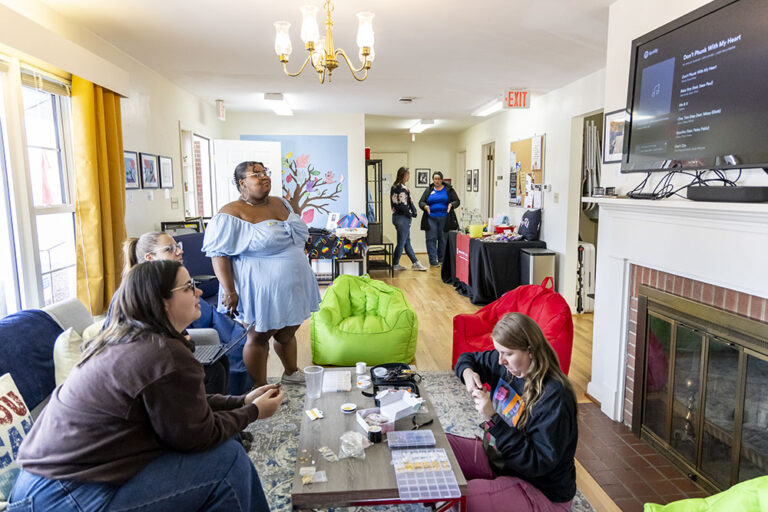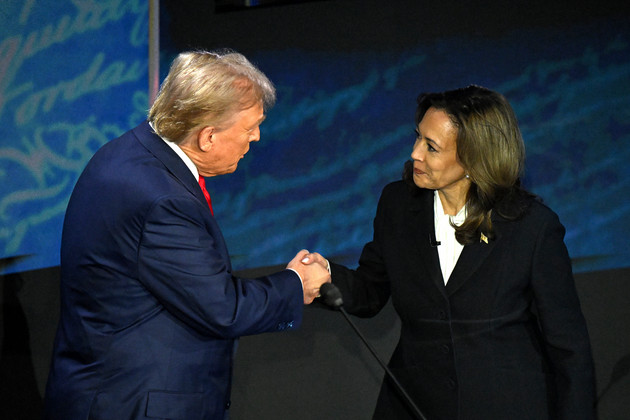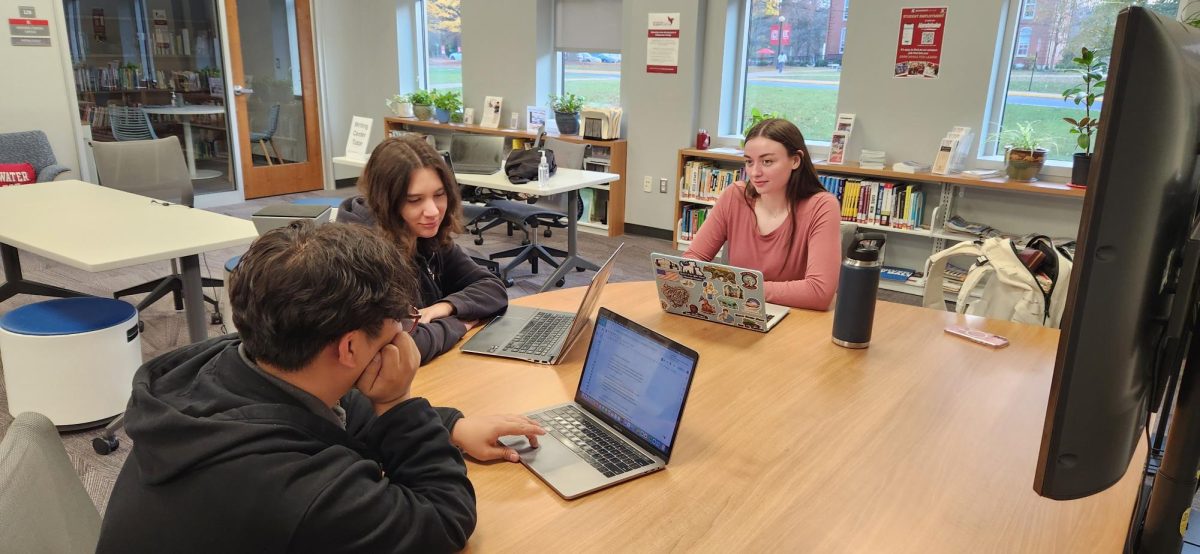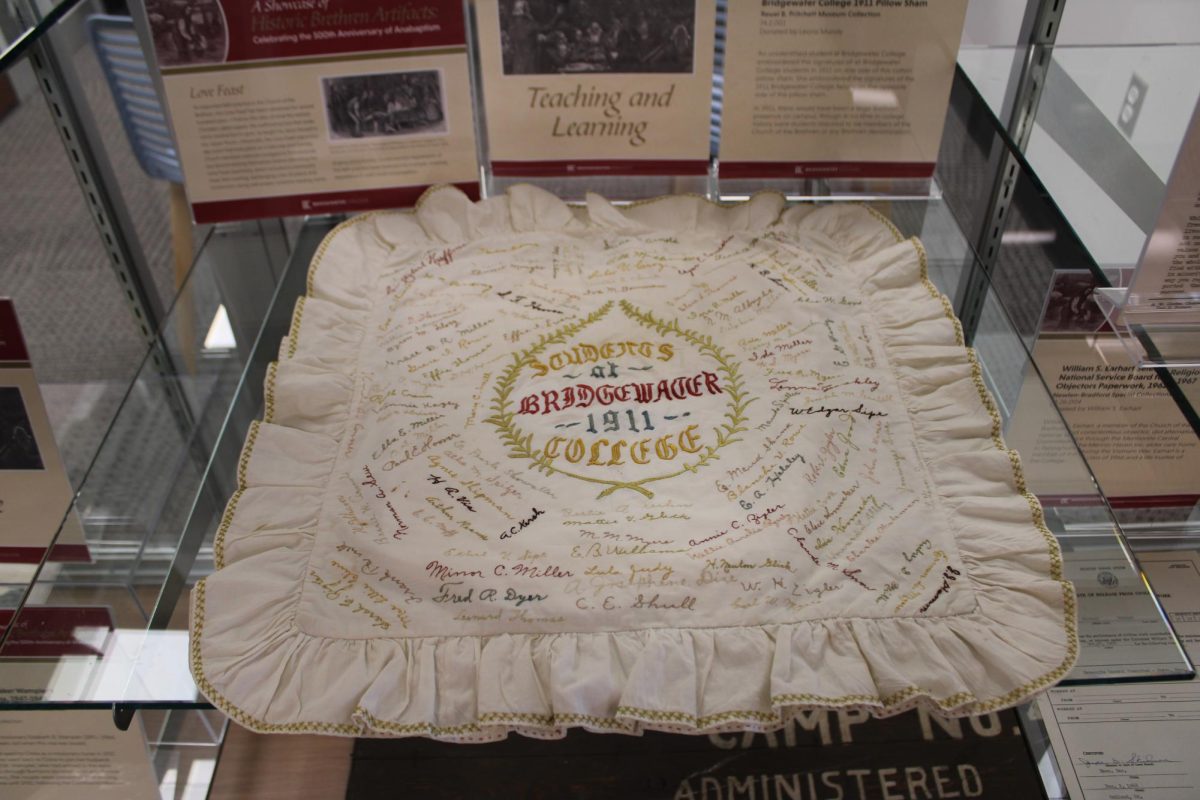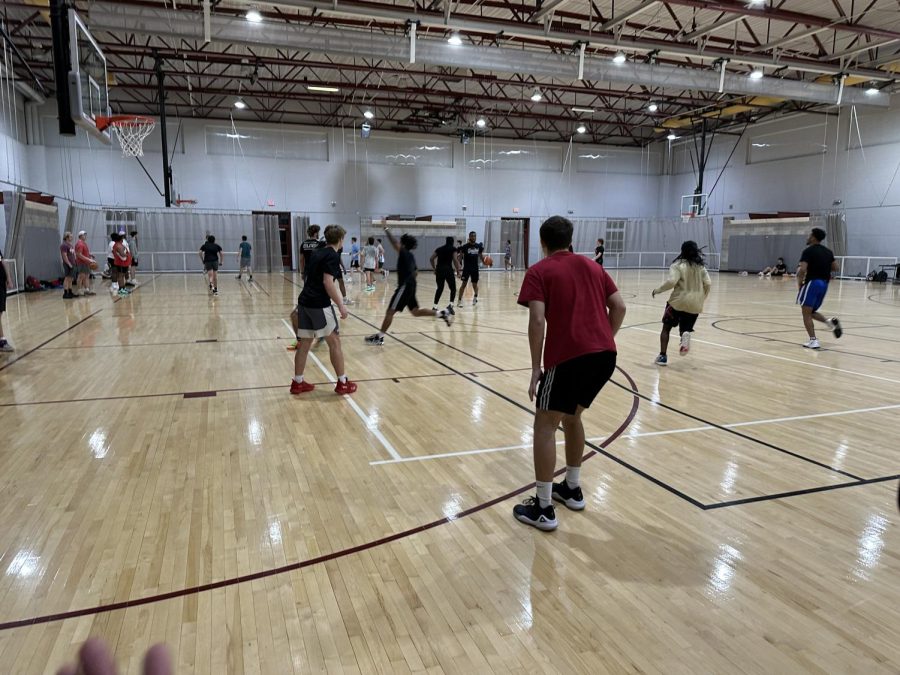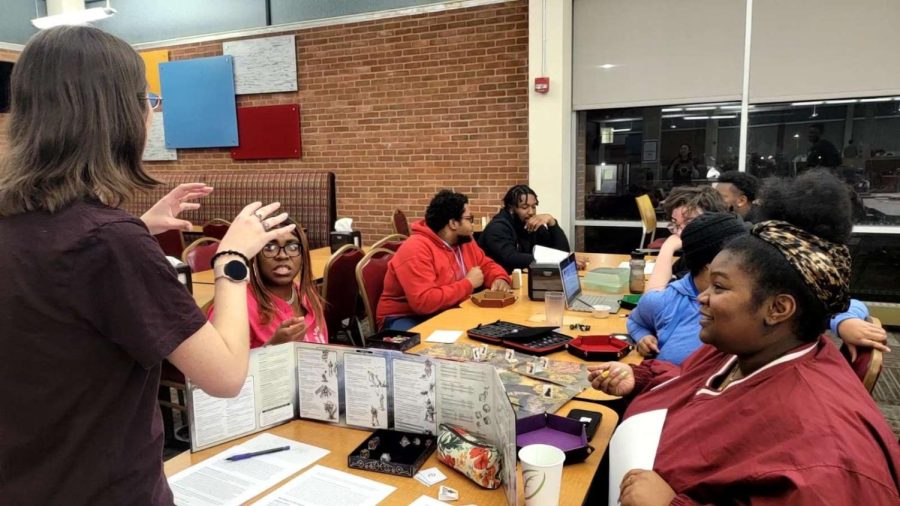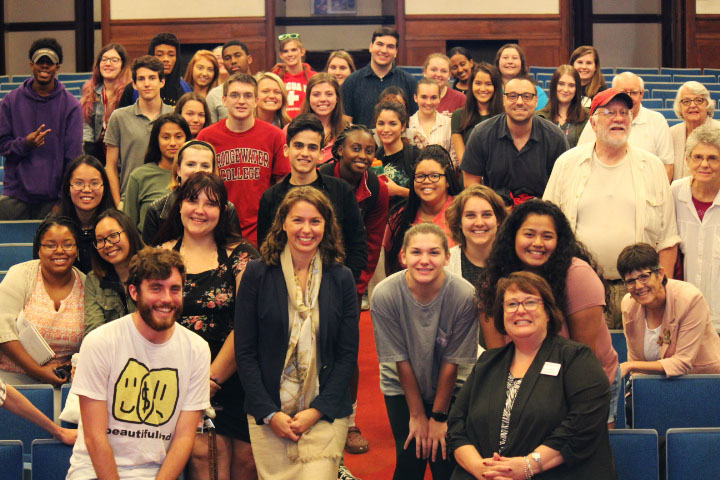Wuerz Provides Strategies and Tips for Conflict Resolution
Program Consultant for Sustained Dialogue Institute Educates
Elizabeth Wuerz (center) and the audience took a picture together, and left with new insights.
October 1, 2019
Bridgewater, VA- On Thursday, The Center for Engaged Learning at Bridgewater College presented “Throwing Shade: Navigating Conflict Effectively,” a convocation about conflict resolution. The convocation was at 7:30 PM in Cole Hall and was attended by students, staff, and community members.
Elizabeth Wuerz, a program consultant for the Sustained Dialogue Institute (SDI), was the guest speaker. Before working with SDI, Wuerz developed training sessions for conflict management on several campuses. She also researched material for a new citizen security initiative in Central America.
After thanking President Bushman and Student Life for hosting her, Wuerz began by saying that conflict is normal and natural, and presented the idea as being an opportunity for growth. Wuerz said that when conflict occurs between two people or groups, people respond in one of several ways.
She provided a diagram in her power point to demonstrate these topics. The diagram showed that the way we respond to conflict with someone else is based on two factors: how much we care about the relationship and how badly we want to attain the goal at hand.
The four main approaches were the “turtle shell” approach, which is avoiding conflict entirely; the “lion” approach, which is trying to attain the goal regardless of the damage to the relationship; the “chameleon” or accommodating approach, which is placing the relationship above being right; and the “dolphin” approach, which is when both parties actively care and actively disagree with each other, but are willing to talk it over. Wuerz pointed out that the “lion” approach is corrosive to relationships, and the “dolphin” approach is the most rewarding as well as the most demanding way to deal with conflict.
Wuerz quoted Hal Saunders, the founder of SDI, to illustrate the meaning of interpersonal conflict and said, “There are some things that only governments can do, like build policies and make rules. There are other things only everyday people can do, like build the culture of how they treat one another.”
By “everyday people,” Saunders was referring to people who are not necessarily in positions of authority but who still have the power to influence culture. Another fact that Wuerz shared was that the Chinese symbol for conflict is the symbols for danger and opportunity combined.
Wuerz moved on to speak about the way we begin thinking when a conflict occurs. Initially our amygdala, commonly referred to as the “lizard brain” is activated and we enter into “fight or flight” mode. If we continue to approach the conflict this way our thinking will be binary, and we will have an us vs. them mindset about the conflict.
Wuerz stated the way to move into a more collaborative mindset is to implement active thinking, which is mostly non-verbal. Some of the components of that are being open, relaxed, leaning forward, and making eye contact. Verbal components of active listening are asking questions, summarizing what someone says back to them, and expressing gratitude.
Wuerz also expressed the importance of perceptions when it comes to conflict. The way we act towards others is based off of our perceptions of them, and we are less likely to check the accuracy of our perceptions of people we know.
Another key to switching out of binary “us vs. them” thinking that Wuerz mentioned was the five Cs. The five Cs are clarify, change, communicate, contribute, and come back to it. Clarify means asking questions like “what do you mean by…;” change means change the conversation from opinions to experiences; and communicate means to communicate the impact on you. Contribute refers to contributing your “scuba story” which is diving into your own experiences and communicating their effect on you. To come back to it means that sometimes it is best to leave a situation alone for a little while and return to it.
Wuerz ended the convocation by answering several questions from the audience.


